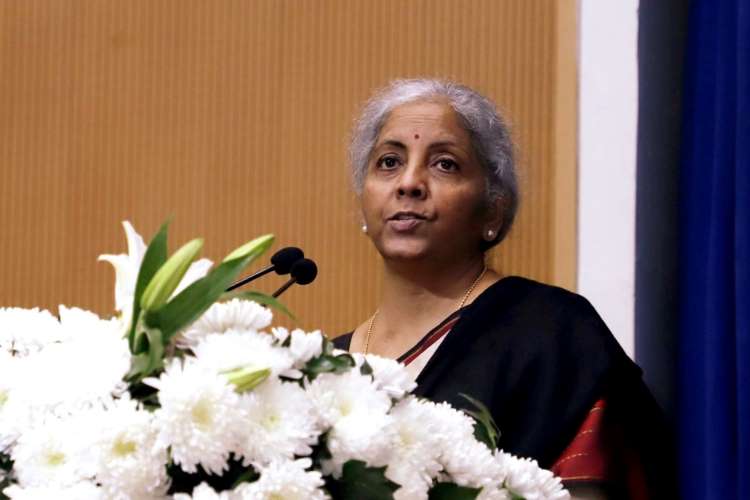
The Union Budget 2022 is well crafted, striking a harmonious balance between enterprise and welfare economy. This government’s vision has always been to empower people towards self-sustainable livelihoods while giving due subsidies and handholding support through various welfare programmes for the provision of basic and social amenities. The budget lays great emphasis on public spending and incentivises private investment through various innovative approaches of revenue generation.
The Economic Survey 2021-22 sets an optimistic tone with a robust projection of 9.2% GDP expansion in 2021-22 and 8.-8.5% growth in 2022-23. The central theme of the analysis was the innovative agile approach which comprises feedback loops, real-time monitoring of actual outcomes, flexible responses, and safety-net buffers. This is a paradigm shift in policy making from the traditional waterfall approach comprising upfront analysis and detailed planning in the form of the five-year plans, which was termed “pretence of knowledge” by Nobel-winning economist Friedrich Hayek.
READ I Budget 2022: Optimism of policy makers may be misplaced
Budget 2022: Dynamic planning approach
Given the volatile global economic environment, these long-term forecasting models had to give way to a fast-track, reactive and dynamic planning approach. This is what helped India cope with the Covid-19 crisis in a manner which surpassed the performance of even leading economies of the world.
The Atmanirbhar Bharat packages announced by the government in the last two years was also a result of this agile approach which included a series of welfare responses ranging from free ration to the poor to emergency credit responses towards Micro, Small and Medium Enterprises (MSMEs). These, along with the fast tracking of vaccination, helped the country cope with the unprecedented global health and economic crisis and led to India emerging as one of the fastest-growing economies in the world.
The Union Budget 2022 followed the tested model of growth in the last two years and continued with the trend of public investments last year. This budget lays the cornerstone of infrastructure investment with a 35.4% increase in capital expenditure to Rs 7.5 lakh crore. The effective capital expenditure of the Union government, which includes the devolution to state governments, is estimated at Rs 10.68 lakh crore in 2022-23, which is about 4.1% of the GDP.
READ I Budget 2022: Making Indian economy future ready
The PM Gati Shakti Master Plan is a winning idea and is driven by seven engines: roads, railways, airports, ports, mass transport, waterways, and logistics infrastructure. The formulation of a National Master Plan is aimed at world-class modern infrastructure and logistics synergy. The milestones for 2022-23, being laid out under this, include 25,000 km of national highways, 4 multimodal logistics parks through PPP, integration of postal and railways network facilitating parcel movement, and 400 new-generation Vande Bharat Trains.
The budget has also given a strong focus on being clean and green, with announcements of innovative measures for climate action. An additional allocation of Rs 19,500 crore for production linked incentives (PLI) for the manufacture of high-efficiency solar modules to meet the goal of 280 GW installed solar capacity by 2030 is an example of the climate action budgeting.
Budget 2022 also follows the trend towards an enterprise economy with an increase in allocation towards emergency credit support for MSMEs under the CGTMSE and the announcement of new programmes such as Raising and Accelerating MSME Performance (RAMP) which proposes holistic and end-to-end reforms in the MSME sector.
Agriculture, having been the backbone of the economy during the pandemic, is also given due focus in this budget with announcements promoting chemical-free natural farming, post-harvest value addition, consumption and branding of millet products, delivery of digital and hi-tech services to farmers in PPP mode, use of kisan drones to aid farmers, and launching funds with blended capital to finance agriculture start-ups.
The budget also enhances a slew of welfare measures from the past including milestones such as the coverage of 3.8 crore households under the Jal Jeevan Mission, 80 lakh houses to be completed under PMAY, rolling out the digital health ecosystem, extension of aspirational districts to aspirational blocks, and the upgrade of 2 lakh anganwadis. The allocations under these welfare programmes also see a tangible increment in allocation from 2021-22 to 2022-23. The Union Budget 2022 focuses on empowering India towards a clean, green enterprise economy while continuing to support the last man standing in the queue.
(Vineeta Hariharan is a public policy expert based in New Delhi. The views are personal.)
